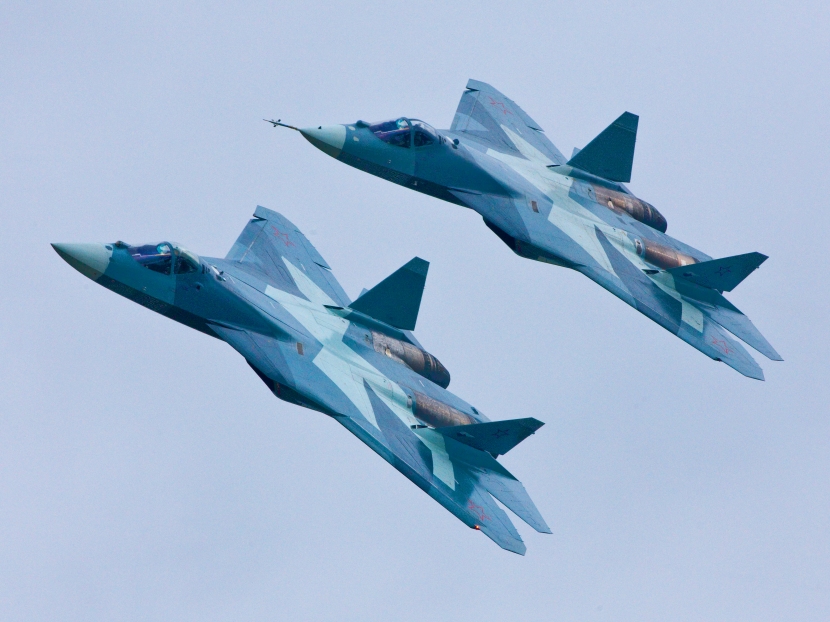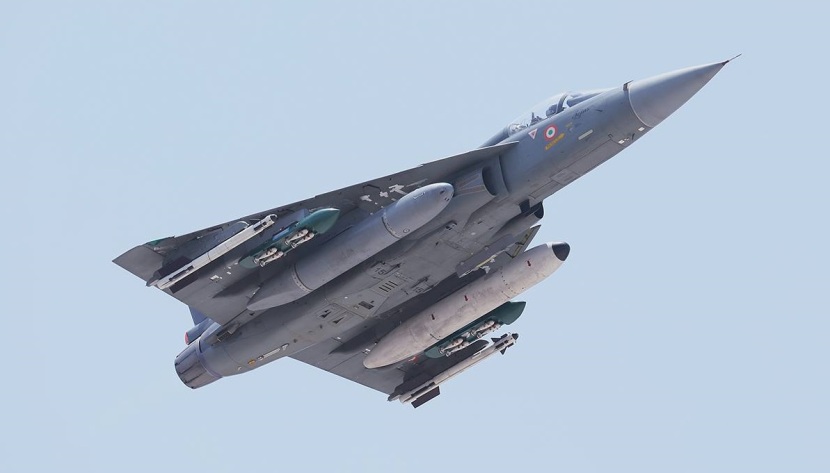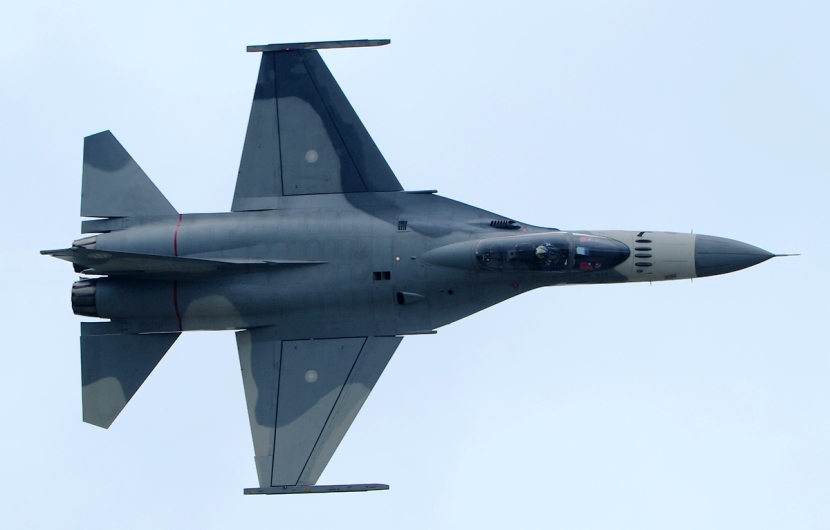Fighter news round-up: Royal United Services Institute’s Justin Bronk examines the current state of fighter aircraft programmes around the world
China’s Chengdu J-20, the aircraft most likely to be stolen by Clint Eastwood.
What year do you expect the J-20 to enter service and how will it compare to Western fighters in terms of capability and technology level?
I expect the J-20 to start entering squadron service for IOC around 2020, with deliveries continuing at a fairly impressive rate throughout the 2020s. The J-20 will almost certainly fall short of the F-22 and
F-35 in terms of all-aspect stealth and sensor fusion-enabled situational awareness, but will carry a more impressive internal payload and will have significantly greater unrefuelled range which will serve it well in the Pacific. Essentially, the J-20 will present the US and its allies in the region with a long ranged, heavily armed and difficult to track strike fighter-bomber threat. I would suggest its closest Western conceptual analogue would be a low-observable F-111.
How is the Sukhoi PAK FA programme going? What are the biggest challenges it faces?
Russia’s Sukhoi PAK-FA, a case of over-ambition?
Not well is the short answer. The T-50 has been downgraded for now to a laughable 12 aircraft for the VVS. This is a huge indicator that the programme is beset by deep-rooted problems in many areas. The T-50/PAK FA as a whole is a perfect example of the lesson that whilst it is comparatively easy to create flying prototypes which look like fifth generation fighters, it is extremely hard to actually make them work as the US alone has managed with the F-22 so far. The huge delays and problems which have beset the F-35 project in spite of the eye-watering quantities of money and expertise which the US has thrown into it should not purely be seen as evidence of programmatic mismanagement (although there is much which I’m sure the US would do differently if given a second chance), but also as evidence of quite how hard what they are trying to achieve is. Russia can make superb airframes but extreme quality control and CPU-crushing electronic complexity are not areas where her aerospace industry has traditionally excelled. Sadly for the VVS, those are precisely what is required to make the T-50/PAK FA into something which can genuinely compete with the F-22 or
F-35. Furthermore, Russia simply does not have enough money to fund its massive military modernisation programmes and priority is being given to the Strategic (nuclear) Rocket Forces, submarine force and new tanks for the army.
Many pundits dismiss the JF-17 – what would be a fair assessment of its effectiveness? Is it comparable to the F-16, and if so – which Block would it be on a par with?
The Sino-Pakistani JF-17, not to be underestimated.
The JF-17 as an airframe is certainly competitive with the F-16, being slightly aerodynamically cleaner, with a lower wing loading but a less efficient engine than the F-16s latest F110-GE-129/132 engine options. In terms of pilot interface, sensor suite and weapon flexibility, the JF-17 is roughly at a par with 1990s-vintage F-16 Block 40/42 and could be close to the USAF-standard Block 50/52, although without the conformal fuel tanks, JHMCS helmet sighting system and radar upgrades which distinguish the later Block 50/52+ and AESA which equips the UAE’s Block 60/61s.
How would you rate the JF-17 in terms of within-visual range (WVR) and beyond-visual range (BVR) fighter capabilities?
WVR, equipped with the MAA-1 Piranha missile, the small and agile JF-17 will be a dangerous but not exactly world-beating opponent for existing fourth generation fighters. It is limited to +8/-3g and the current block 1 and 2 fighters do not yet have a helmet mounted sight system as standard (this is promised for block 3). The JF-17 also doesn’t have a greater than 1:1 thrust to weight ratio so would be at a significant disadvantage in terms of energy management against opponents such as the F-15C, Typhoon or Su-35. BVR, the KLJ-7 radar is significantly out-ranged by the F-16’s AN/APG-68 and completely outclassed by the
Rafale’s AESA array, Typhoon’s CAPTOR-M and the Su-35’s monstrously powerful Irbis-E. The JF-17s small wing area and lightweight also limit its missile-carrying capacity which further disadvantages it in BVR engagements. However, it is worth remembering that the JF-17 is not really intended to take on Typhoons, Rafales, F-15s or Su-35s. It is meant to be a cheap and cheerful light multirole fighter and configured accordingly.
The Super Hornet, compared to other US fighters, has been a big export flop – why do you think this is, and how effective are the latest versions? Also- which fighter will Canada end up with?
In simple terms, the F-18 series has not sold as well on the export market as other US fighters because it is a carrier-capable fighter competing for contracts with conventional fighters to countries which do not operate big-deck carriers. The
F/A-18E/F Super Hornet is second only to the Rafale M as the most capable carrier fighter in the world, but to withstand the huge stresses and corrosive environment of carrier operations it is required to be built heavier, more over-engineered and more expensively than land-based fighters in its class. If a country does not need fighters capable of operating from carriers, it is more likely to go for something like the F-16 which offers similar and in some ways superior capabilities at a significantly lower cost than the Super Hornet. The Super Hornet is an excellent strike fighter with a fairly effective radar, huge weapon flexibility, adequate range and breath-taking high alpha nose authority in a dogfight. However, it does not have the thrust-to-weight ratio and manoeuvrability of the
Typhoon or Rafale, the value for money of the F-16/Gripen or the raw power of the F-15. It also cannot offer the same future survivability as the F-35 in high threat environments. Canada will probably buy Super Hornet because they already operate the legacy Hornet (easing maintenance and pilot retraining burdens) and the Trudeau government is politically committed to getting out of purchasing F-35.
How is the F-22 ageing? Is it still extremely maintenance heavy? Is there evidence to suggest LO degrades with time?
Undefeated champion dependent on a lot of love.
The F-22 is ageing well, having successfully maintained its status as far and away the most formidable air-superiority fighter ever made and with no sign of having that status seriously challenged anytime soon. It is less maintenance heavy than it used to be, especially since the new-generation stealth coatings developed for the F-35 have been incorporated onto the fleet. However, it remains extremely expensive to fly and maintain – USAF figures for last year show a cost per flight hour of $68,000 which is more than even the four-engine supersonic intercontinental B-1B Lancer heavy bomber. This is not only a function of the outdated and highly niche electronics and general mechanical complexity, but also of the very small fleet size compared to what was intended which means that fixed costs for the whole fleet are spread across a comparatively small number of flying hours.
Tejas- joke or hope?
Tejas, national pride over practicality?
Joke. Thirty years of development to produce an aircraft with short range, poor payload, and severe quality control issues throughout the manufacturing process leading to badly fitting structural components, slow delivery rates and high costs due to remanufacturing and alterations requirements. India would have done much better to have just bought a licence to manufacture Gripen C/D.
What is the status of the F-2 fleet of the JASDF? How would you rate the F-2 in terms of effectiveness?
The Mitsubishi F-2: Big-winged F-16 a waste of effort?
The F-2 is, in effect, an F-16 with Japanese electronic wizardry baked into it and a slight aerodynamics upgrade. However, for that Japan has paid an extortionate cost per aircraft and one which cannot really justified by the marginal improvements over the F-16, especially given that the latest UAE-standard F-16 Block 61 Desert Falcons are cheaper and more capable in almost every way. The F-2 shares almost all the same strengths and limitations of the F-16 family so I won’t go into much more detail here. Certainly a useful aircraft for the JASDF but not worth the money and time it took to develop and procure unless the domestic industrial experience gained eventually enables a workable fighter to be developed from the X-2
Shinshin.
Is the AIDC F-CK-1 Ching-kuo a viable defence against the Chinese navy/air force?
F-CK you I won’t do what you tell me.
One on one, the F-CK-1 is more than a match for the J-7 and can probably hold its own against the J-11, but is outclassed by the recent Su-35s purchased from Russia and is certainly not an answer to the J-20 or Beijing’s huge ballistic and long range SAM arsenal within range of Taiwan. However, the F-CK-1 is unlikely to face Chinese fighters on anything like a one for one confrontation and would be hopelessly outnumbered in any likely invasion scenario.
Which of the new fighter projects (South Korea/Japan/Turkey/Eurofighter replacement) would you predict will come to fruition and how effective do you expect them to be?
Mitsubishi X-2 Shinshin: the next superfighter.
I think the Japanese X-2 follow on fifth/sixth generation project is the most likely of these to actually develop into a frontline type. However, this assumes the US does not build an F-22 Raptor replacement first and export it to Japan. If this does not happen, the fact that F-35 is not particularly well suited to Japan’s specific air superiority requirements suggests that they might well feel their own stealth fighter is essential. If it were developed, the aircraft would most likely be at least comparable to the F-22 to make it worth the trouble and so would be formidably capable by almost any measurement.
The most exotic fighter in development is the MiG-31 replacement – what do we know about this?
Pie in the sky?
Source: Bemil.chosun
Sadly, very little indeed. It is yet another potentially very expensive ambition for the VVS but given the fate of the T-50/PAK FA project, I wouldn’t hold your breath on this one until something much more concrete than a statement of requirement emerges.
Will India ever get Rafales? What are the Rafale’s export chances?
Will Rafale become India’s main fighter?
India will most likely get its 36 off the shelf
Rafales and then many more once the purchase model has finally been agreed upon. However, the terms of that deal and the timescale are anyone’s guess. Basically, the Indian Air Force is in desperate need of new fighters and the Rafale is simply too capable to stick at 36 aircraft given the poor serviceability which plagues the Su-30MKI fleet and the disappointing Tejas. Assuming they do take delivery of 36, I would bet on India ordering more and possibly a lot more.
What are Typhoon’s export chances?
Typhoon: too late and too much.
Whilst the Kuwaiti order has been a great morale boost for Eurofighter, it is difficult to escape concluding that Typhoon has more or less run out of significant new export opportunities for the foreseeable which means production will end by around 2020. The problem is that although the aircraft is formidably capable as a top-class multirole fighter, it is simply too expensive to compete with the F-16 and F-18 for medium-rank air forces whilst it is so late with promised capabilities such as the AESA radar that those countries that are looking for gold-plated solutions and might once have bought the jet are mostly waiting to purchase the F-35.
Any news on the status of the Meteor on Gripen? How would you rate the frontline Meteor-armed Gripens in terms of A2A capability?
Gripen with Meteor: the little guy with the long arms.
The Gripen with Meteor is a highly capable platform BVR but relies on permissive rules of engagement to be able to take advantage of the long range punch of the missile. It also does not have the grunt of Typhoon to get the most out of the missile with supercruise launch profiles at very high altitudes guided by CAPTOR. However, Meteor certainly makes the Gripen even more competitive on the export market as it can continue to provide (in very rough terms) 90% of the capability of a Typhoon or F-15 at a third of the price. Coupled with the Gripen NG’s impressive electronic warfare package, Meteor will give the Swedish and Brazilian air forces a very respectable fighter for the next decade with a bargain price tag
What should I have asked you?
Probably something on FCAS but that can wait for another time!
Justin Bronk is a Research Fellow at the Military Sciences at Royal United Services Institute. He has written articles on the Su-35, RAF’s role in Syria, and the Rafale versus Typhoon.
Thank you for reading Hush-Kit. Our site is absolutely free and we have no advertisements. If you’ve enjoyed an article you can donate here.
Follow him on
Twitter: @Justin_Br0nk
Follow my vapour trail on Twitter
: @Hush_kit
You may also enjoy top WVR and BVR fighters of today, an interview with a Super Hornet pilot and a Pacifist’s Guide to Warplanes. Want something more bizarre? The Top Ten fictional aircraft is a fascinating read, as is The Strange Story of The Planet Satellite. Fashion Versus Aircraft Camo is also a real cracker.
Source:
https://hushkit.net/2016/07/24/figh...fighter-aircraft-programmes-around-the-world/

















